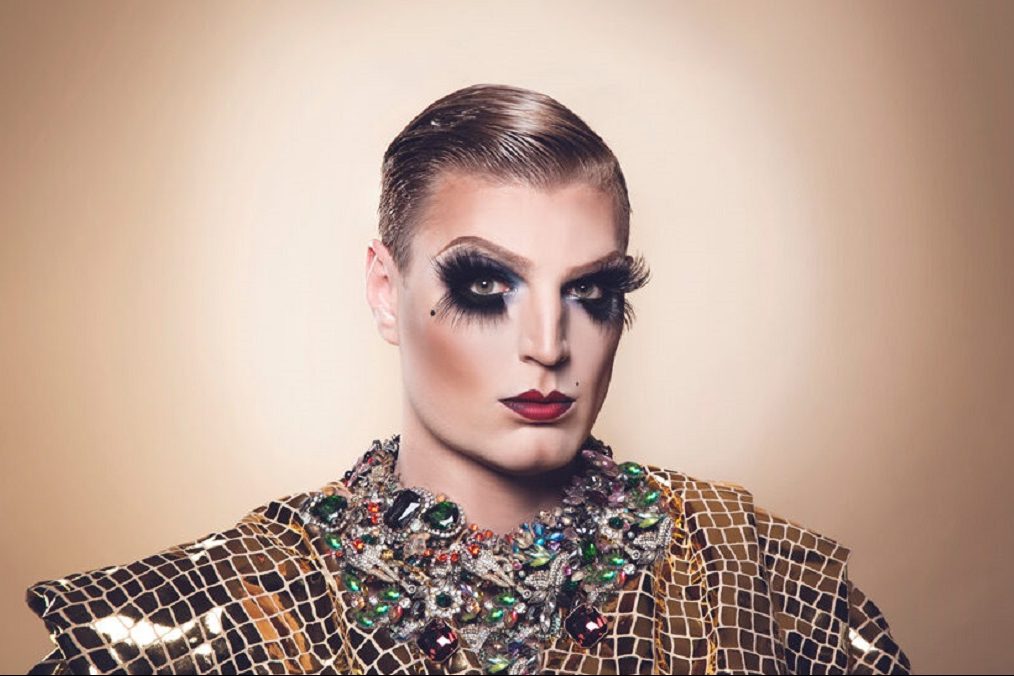
“Mess”, a Belco Arts Production, directed by Natsuko Yonezawa, Belconnen Arts Centre until October 2. Reviewed by SAMARA PURNELL.
THE audience barely noticed the subtle beginning of “Mess”, which saw creator Natsuko Yonezawa, in a floor-length red dress, moving her arms and torso gently, to the quiet and melancholy cover by Damien Rice, of Sia’s “Chandelier”.
Before long, the theatre doors closed and musician Marlene Claudine Radice began to fill the space with notes from a clarinet.
Christopher Samuel Carroll and Miriam Slater, white-faced and zombie-like, began to explore the Japanese phenomenon of “hikikomori”, whereby reclusive adolescents or adults withdraw from society and seek extreme degrees of isolation and confinement. This theme was underpinned by the depiction of co-dependent, familial relationships within Japanese culture, notably between mother and son. The social isolation and home confinement being experienced during the COVID-19 pandemic was also at the forefront of Yonezawa’s mind during the creative process.
The Belco Theatre layout is open and gives a sense of being in the same space as the performers and through clever lighting and set design, managed to achieve the ambience of night-time, unnatural light and being underground and confined. The streamlined tunnels of white, blue, soft yellow and red lighting were strikingly effective.
From slow, controlled movements, with elements of Butoh, to distressed, twitchy movements, like a drug-withdrawal or fighting invisible demons, Carroll and Slater maintained unwavering focus and commitment to their roles – at times the choreography required them to muster more energy than may be expected of hikikomori. “Mess” contains depictions of voyeurism and hints at taboo interactions.
Enormous piles of delivery boxes are used as props, with set design by byrd. It would normally appear as though FedEx had lost its load until the online shopping and home-delivery explosion during COVID are called to mind. The boxes are also utilised by the actors to create obstacles and then towers, a slightly tedious segment of the performance. But once complete, the towers resemble apartment blocks, to peer out from, to hide in and to erupt from the landscape as the hikikomori phenomenon spreads.
Linda Buck’s lighting design and Radice’s incredible looping, surround-sound soundscapes, were crucial components of creating this immersive, intense production. Enchanting effects created by the breath, inhaled and exhaled across several microphones, emulated freezing fog and wind. Some abrupt endings and changes of music and sound in some segments of the show detracted slightly from the flow and cohesion of the work.
Fleeting moments of recognisable movements and actions and a short, awkward segment of physical contact between Carroll and Slater, gives a glimmer of hope that some human interaction or emergence from the dark may be forthcoming, but overall there is very little sense of relief or fulfilment within the recognisable constructs of society. This appears to fit with the length of time and the number of people now living as hikikomori.
Chenoeh Miller, as producer of “Mess”, has assembled a team of committed creatives across the platforms of theatre, music and design, who have delivered an impressive, quality work, shedding light, metaphorically at least, on the socially confined and isolated, whether self-inflicted, or via a global event.
As the bilingual repetition of the sentiment “As long as one uses their misfortune to one’s advantage to feel special, one will always need that misfortune” lingers, the audience files out of the eerie ambience created in the theatre and into the night, to ponder this interesting piece of physical theatre.
Who can be trusted?
In a world of spin and confusion, there’s never been a more important time to support independent journalism in Canberra.
If you trust our work online and want to enforce the power of independent voices, I invite you to make a small contribution.
Every dollar of support is invested back into our journalism to help keep citynews.com.au strong and free.
Thank you,
Ian Meikle, editor




Leave a Reply